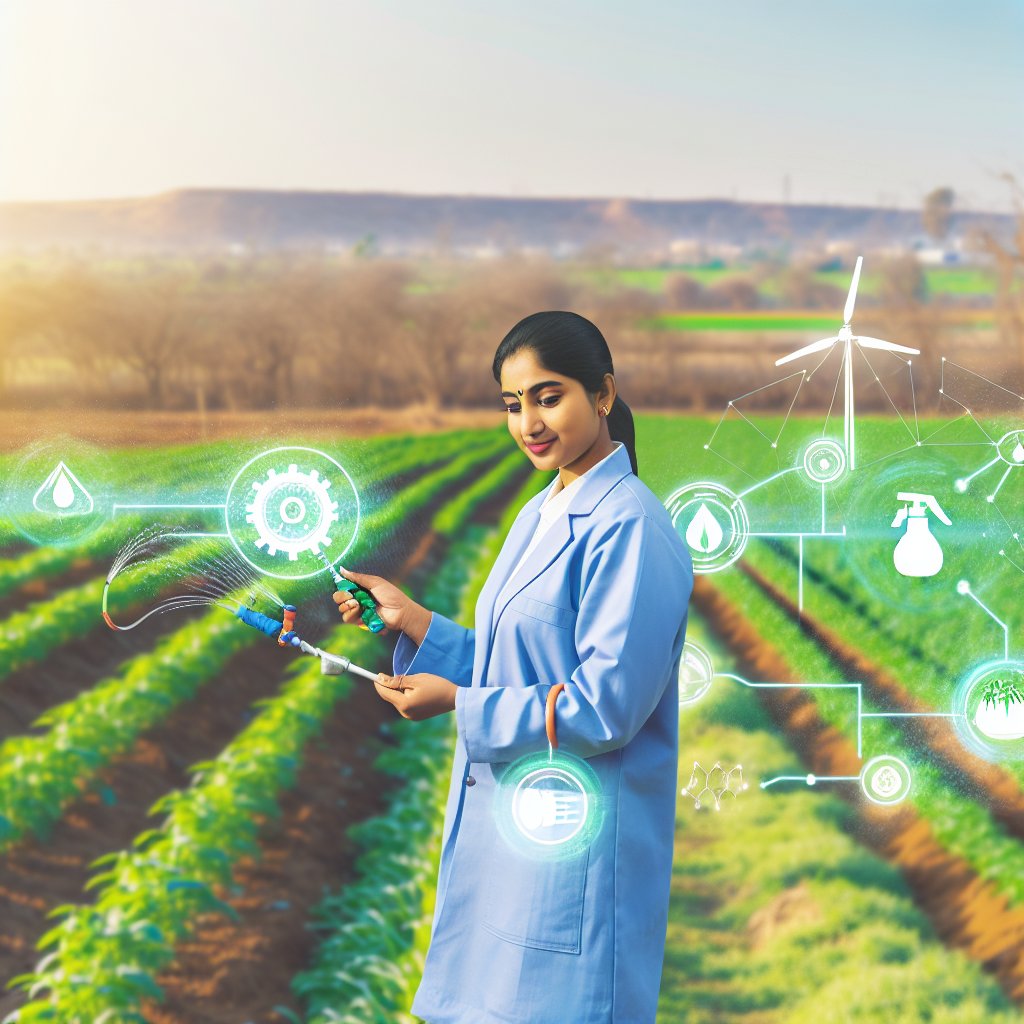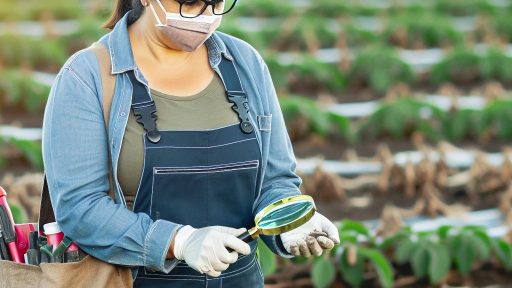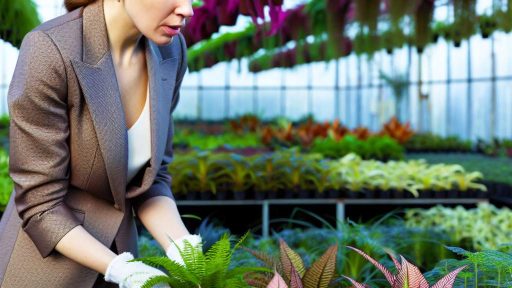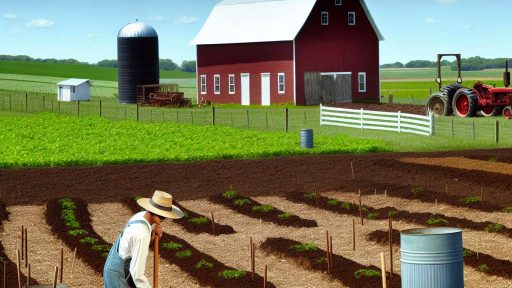Introduction to Smart Irrigation
Smart irrigation refers to advanced techniques used for efficient water management.
These methods utilize technology to optimize water usage in agriculture.
Moreover, smart irrigation plays a crucial role in sustainable crop cultivation.
Definition of Smart Irrigation
Smart irrigation integrates automated systems for managing water supply.
These systems monitor soil moisture and weather conditions in real time.
As a result, they deliver water precisely when crops need it.
Importance of Smart Irrigation
Smart irrigation helps conserve water resources significantly.
This conservation is essential considering the increasing global water scarcity.
Furthermore, it enhances crop productivity and resilience against climate variability.
By using smart irrigation, farmers can achieve higher yields with less water.
Technological Components
Smart irrigation systems often include sensors, controllers, and automation kits.
Sensors measure soil moisture and weather conditions accurately.
Controllers adjust the irrigation schedule based on sensor data.
Automation reduces the need for manual intervention, saving time and effort.
Environmental Benefits
This approach minimizes water waste and runoff into local water bodies.
Transform Your Agribusiness
Unlock your farm's potential with expert advice tailored to your needs. Get actionable steps that drive real results.
Get StartedAs a result, it reduces pollution and protects aquatic ecosystems.
Additionally, smart irrigation contributes to healthier soil by preventing erosion.
Overall, it supports a more sustainable agricultural landscape.
Benefits of Smart Irrigation for Sustainable Crop Cultivation
Water Conservation
Smart irrigation systems significantly reduce water wastage.
They provide precise water delivery based on the plants’ needs.
As a result, farmers use water more efficiently.
This practice helps in conserving vital water resources.
Improved Crop Yields
Using technology in irrigation leads to healthier plants.
This results in increased crop production.
Moreover, consistent watering promotes uniform growth.
Therefore, farmers enjoy higher profits from better yields.
Reduced Labor Costs
Smart irrigation systems automate watering processes.
This reduces the need for manual labor in irrigation.
Farmers can reallocate labor to other essential tasks.
Consequently, this enhances overall farm efficiency.
Environmental Benefits
Smart irrigation minimizes runoff and soil erosion.
It maintains the natural hydrology of the land.
Additionally, it reduces the risk of water pollution.
This fosters a healthier ecosystem surrounding the farm.
Cost Savings
Investing in smart irrigation technologies offers long-term savings.
Farmers see reduced water bills and energy costs.
Furthermore, less water usage translates to lower operational expenses.
As a result, overall profits increase over time.
Adaptability to Climate Change
Smart irrigation can adapt to changing weather patterns.
Showcase Your Farming Business
Publish your professional farming services profile on our blog for a one-time fee of $200 and reach a dedicated audience of farmers and agribusiness owners.
Publish Your ProfileFor instance, it adjusts water supply during drought conditions.
This adaptability helps farms remain resilient.
Farmers can sustain productivity despite environmental challenges.
Overview of Traditional vs. Smart Irrigation Techniques
Understanding Traditional Irrigation Methods
Traditional irrigation methods include flood, furrow, and surface irrigation.
These techniques often rely on gravity to distribute water across fields.
Farmers typically use these methods to manage water resources.
However, traditional practices can lead to water wastage.
Moreover, they may result in uneven water distribution.
Challenges with Traditional Irrigation
Traditional irrigation contributes to significant water loss through evaporation.
It often relies on weather conditions, making it less reliable.
Additionally, soil erosion can occur due to excess water.
This can deplete soil fertility and affect crop yield.
Introduction to Smart Irrigation Techniques
Smart irrigation techniques utilize technology for efficient water management.
They incorporate automated systems to monitor soil moisture levels.
Farmers can adjust watering schedules based on real-time data.
This method significantly reduces water consumption.
Benefits of Smart Irrigation
Smart irrigation improves resource efficiency by targeting specific needs.
It minimizes waste through precise water delivery systems.
These systems can include drip irrigation and sprinkler systems.
Moreover, they allow for better crop health and productivity.
Comparing Efficiency
Smart irrigation systems can save up to 50% more water than traditional methods.
Consequently, they provide economic benefits by lowering water costs.
Farmers experience less labor and maintenance needs with automated systems.
Smart irrigation proves to be a sustainable alternative.
Explore Further: Essential Greenhouse Construction Tips For Emerging Farmland Investors
Key Technologies in Smart Irrigation
Sensors
Sensors play a vital role in smart irrigation systems.
They monitor soil moisture levels accurately.
This technology helps determine when to irrigate.
Additionally, sensors can provide real-time data to farmers.
Consequently, this enables informed decision-making.
IoT Applications
The Internet of Things (IoT) enhances smart irrigation significantly.
IoT devices connect various components of irrigation systems.
They allow for remote monitoring and control of water usage.
Through IoT, farmers can receive alerts and updates on conditions.
As a result, they can respond more quickly to changing needs.
Automation Systems
Automation systems streamline irrigation processes effectively.
They reduce the need for manual intervention.
By automating watering schedules, farmers can increase efficiency.
Moreover, these systems ensure uniform water distribution.
This helps in conserving water and optimizing crop yield.
Showcase Your Farming Business
Publish your professional farming services profile on our blog for a one-time fee of $200 and reach a dedicated audience of farmers and agribusiness owners.
Publish Your ProfileData Analytics in Irrigation
Data analytics provides valuable insights for smart irrigation.
Farmers can analyze historical data for better predictions.
By doing so, they can identify patterns in water usage.
Analytics also helps to understand which crops need more water.
This optimizes the overall irrigation strategy.
Benefits of Smart Irrigation Technologies
Smart irrigation methods offer numerous benefits.
- They improve water efficiency significantly.
- These technologies reduce labor costs for farmers.
- They enhance crop health and yield.
- Smart irrigation helps in environmental protection.
These technologies support sustainable agriculture moving forward.
Discover More: Harvesting Methods for Diversified Farmland Investments
Case Studies: Successful Adoption of Smart Irrigation in Different Climatic Regions
Tropical Region: Precision Agriculture in Brazil
Brazil has embraced smart irrigation in its agriculture.
Farmers use drip irrigation systems for water conservation.
This method optimizes water delivery directly to plant roots.
As a result, crop yields have significantly increased.
Additionally, farmers report reduced water usage by up to thirty percent.
Arid Region: Innovative Practices in Israel
Israel has pioneered smart irrigation technologies due to water scarcity.
The country employs advanced drip irrigation techniques extensively.
Farmers utilize sensors to monitor soil moisture levels.
This approach informs irrigation schedules for maximum efficiency.
Consequently, Israel has turned desert areas into productive farmland.
Temperate Region: Sustainable Methods in the United States
In the United States, farmers in California have adapted smart irrigation.
They implement weather-based irrigation controllers for efficiency.
These controllers adjust water application based on real-time weather data.
This method not only conserves water but also reduces costs.
Farmers have witnessed improved crop health and productivity.
Cold Region: Smart Irrigation Techniques in Canada
Canada faces unique challenges with its colder climate.
Farmers have adopted heated irrigation systems to combat frost.
This innovation allows for earlier planting and greater crop yields.
Additionally, soil moisture sensors help in water management.
As a result, farmers maintain sustainable practices even in harsh conditions.
Discover More: Long-Term Weed Prevention Techniques for Large Landowners

Challenges and Limitations of Implementing Smart Irrigation Methods
High Initial Costs
Initial investment in smart irrigation systems can be substantial.
This cost deters many farmers from adopting new technology.
Moreover, funding options may not be readily available.
Farmers often face barriers in accessing financing.
Additionally, ongoing maintenance costs can add financial pressure.
Technological Complexity
Smart irrigation technologies can be complex to operate.
Farmers may require specific training to use these systems effectively.
Moreover, the steep learning curve can hinder adoption.
Data management can also pose significant challenges.
Many farmers feel overwhelmed by the technology’s demands.
Inconsistent Data Collection
Data collection methods are not always reliable.
Showcase Your Farming Business
Publish your professional farming services profile on our blog for a one-time fee of $200 and reach a dedicated audience of farmers and agribusiness owners.
Publish Your ProfileInaccurate readings can lead to poor irrigation decisions.
This inconsistency undermines the system’s effectiveness.
Furthermore, environmental factors can affect data accuracy.
Farmers may struggle to trust the information provided.
Integration with Existing Systems
Smart irrigation systems must integrate with traditional methods.
Existing hardware may not be compatible with new technology.
This inconsistency can complicate system upgrades.
Farmers may face challenges in making necessary adjustments.
Consequently, seamless integration becomes crucial for success.
Environmental Variability
Regional climate differences impact irrigation requirements.
Farmers in diverse areas face varying challenges.
For instance, rainfall patterns can vary significantly.
These differences make it hard to standardize smart irrigation practices.
Adaptations may be necessary to meet specific local conditions.
Limited Access to Technology
In rural areas, access to necessary technology may be limited.
Internet connectivity can also be a significant issue.
Farmers may lack the resources to install smart systems.
This digital divide further exacerbates existing inequalities.
Consequently, some regions might remain underserved.
See Related Content: Satellite Imagery Analysis For Sustainable Farmland Purchase Decisions
Best Practices for Integrating Smart Irrigation with Other Sustainable Farming Techniques
Understanding Smart Irrigation
Smart irrigation utilizes advanced technologies to optimize water use.
This technique enhances crop yield while conserving natural resources.
By monitoring soil moisture and weather conditions, farmers can make informed decisions.
Therefore, integrating smart irrigation with sustainable practices becomes crucial.
Soy Health Management
Healthy soil improves water retention and nutrient availability.
Implementing cover crops can boost soil health effectively.
Additionally, organic amendments enrich soil structure and enhance microbial activity.
This combination ensures crops thrive even with reduced water usage.
Crop Rotation Practices
Crop rotation prevents soil depletion and minimizes pest outbreaks.
This practice enhances soil fertility and optimizes water usage.
As a result, farmers observe improved yields and reduced irrigation needs.
Integrating diversified crops can lead to greater resilience against climate variability.
Precision Agriculture Integration
Precision agriculture enhances smart irrigation systems significantly.
Utilizing GPS technology allows precise water application to crops.
This approach minimizes water wastage and maximizes efficiency.
Moreover, data analytics can identify specific crop needs at different growth stages.
Community Engagement and Education
Educating farmers about smart irrigation benefits fosters community adaptation.
Workshops and training programs can provide practical skills and knowledge.
Local farming groups can facilitate sharing experiences and best practices.
By building a supportive network, farmers can collectively innovate.
Showcase Your Farming Business
Publish your professional farming services profile on our blog for a one-time fee of $200 and reach a dedicated audience of farmers and agribusiness owners.
Publish Your ProfilePolicy Support and Incentives
Government policies can encourage the adoption of smart irrigation methods.
Providing financial incentives stimulates investment in sustainable technologies.
Additionally, guidelines for sustainable practices can be established.
Such policies can empower farmers to transition towards sustainable agriculture.
Future Trends and Innovations in Smart Irrigation for Agriculture
Advancements in Technology
Smart irrigation technology continuously evolves with advancing digital tools.
Innovations like IoT sensors provide real-time data to farmers.
These sensors monitor soil moisture levels and weather conditions.
Moreover, artificial intelligence analyzes this data to optimize water usage.
Integration with Sustainable Practices
Farmers increasingly integrate smart irrigation methods with sustainable practices.
This approach conserves water while maximizing crop yields.
Additionally, using rainwater harvesting complements smart irrigation systems.
Thus, farmers reduce reliance on groundwater and promote sustainability.
Regional Customization of Solutions
Smart irrigation solutions now consider specific regional needs.
For instance, desert regions utilize advanced drip irrigation systems effectively.
Conversely, wetter climates benefit from scheduling technologies.
This customization enhances the efficiency of water use across diverse environments.
Emerging Market Trends
The market for smart irrigation systems is growing rapidly.
Many startups are developing cost-effective solutions for smallholder farmers.
This shift promotes broader accessibility to advanced irrigation technologies.
Furthermore, the increased awareness of climate change drives demand for these systems.
Collaboration and Knowledge Sharing
Collaboration among agricultural stakeholders enhances smart irrigation practices.
Farmers, researchers, and technology developers work together to share knowledge.
This partnership fosters innovation and ensures best practices are implemented.
Consequently, the agricultural community benefits as a whole.
Additional Resources
Advancing sustainable agriculture for goal 2: zero hunger-a …
Conservation Innovation Grants Awards Fiscal Year 2023 | Natural …




